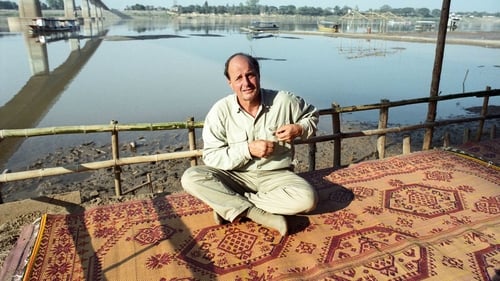
Writer
Chronicles the making of director Werner Herzog’s 2009 feature, My Son, My Son, What Have Ye Done, providing profound insight into the director and his craft. My Son, My Son, What Have Ye Done was inspired by the true story of an actor who committed in reality the crime he was supposed to enact on stage: murdering his mother. With longtime friend Herbert Golder behind the lens, Herzog reveals the privacy and deep solitude that defines the director and his art.

Director
Chronicles the making of director Werner Herzog’s 2009 feature, My Son, My Son, What Have Ye Done, providing profound insight into the director and his craft. My Son, My Son, What Have Ye Done was inspired by the true story of an actor who committed in reality the crime he was supposed to enact on stage: murdering his mother. With longtime friend Herbert Golder behind the lens, Herzog reveals the privacy and deep solitude that defines the director and his art.

Himself
Chronicles the making of director Werner Herzog’s 2009 feature, My Son, My Son, What Have Ye Done, providing profound insight into the director and his craft. My Son, My Son, What Have Ye Done was inspired by the true story of an actor who committed in reality the crime he was supposed to enact on stage: murdering his mother. With longtime friend Herbert Golder behind the lens, Herzog reveals the privacy and deep solitude that defines the director and his art.

Additional Photography
The Making of 'My Son, My Son, What Have Ye Done'.

Self
The Making of 'My Son, My Son, What Have Ye Done'.

Screenplay
Brad has committed murder and barricaded himself inside his house. With the help of his friends and neighbours, the cops piece together the strange tale of how this nice young man arrived at such a dark place.

Assistant Director
Werner Herzog returns to the South American jungle with Juliane Koepcke, the German woman who was the sole survivor of a plane crash there in 1971. They find the remains of the plane and recreate her journey out of the jungle.

Assistant Director
In 1966, Dieter Dengler was shot down over Laos, captured, and, down to 85 pounds, escaped. Barefoot, surviving monsoons, leeches, and machete-wielding villagers, he was rescued. Now, near 60, living on Mt. Tamalpais, Dengler tells his story: a German lad surviving Allied bombings in World War II, postwar poverty, apprenticed to a smith, beaten regularly. At 18, he emigrates and peels potatoes in the U.S. Air Force. He leaves for California and college, then enlistment in the Navy to learn to fly. A quiet man of sorrows tells his story: war, capture, harrowing conditions, escape, and miraculous rescue. Where did he find the strength; how does he now live with his memories?

Post Production Supervisor
In 1966, Dieter Dengler was shot down over Laos, captured, and, down to 85 pounds, escaped. Barefoot, surviving monsoons, leeches, and machete-wielding villagers, he was rescued. Now, near 60, living on Mt. Tamalpais, Dengler tells his story: a German lad surviving Allied bombings in World War II, postwar poverty, apprenticed to a smith, beaten regularly. At 18, he emigrates and peels potatoes in the U.S. Air Force. He leaves for California and college, then enlistment in the Navy to learn to fly. A quiet man of sorrows tells his story: war, capture, harrowing conditions, escape, and miraculous rescue. Where did he find the strength; how does he now live with his memories?






